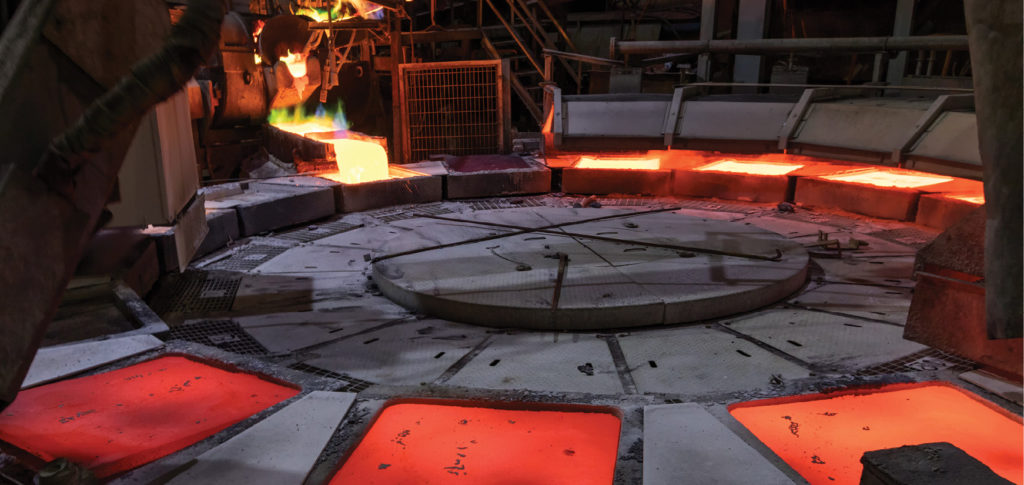What miners need to know about smelter charges

Costmine explains how fluctuating treatment fees can erode the value of base metals projects
From the miner’s perspective, smelter associated costs look similar for most base metal smelters. The primary charge is a base treatment charge (or smelter charge) upon the number of dry tonnes of concentrate or ore treated. Assay and price adjustments are made upon the metals paid for as well; assay values of the feed, and associated payments made to the miner, are reduced based upon the percentage of recovered metals the smelter will pay for. Typically, 85-98% of the value of the contained metals are paid for by the smelter, bringing down the value received by the miner. Assessments for excess deleterious elements can also lower the returned value. If the metals recovered require further purification, a refining charge will also be assessed in dollars per unit of metal (typically pounds). Finally, some smelting contracts (but not all) include price participation, or escalation or de-escalation of charges based on metal price fluctuations.
Net smelter receipts, or the values returned to the miner, are thus calculated by determining the value of the concentrate based upon the percentage of metal paid for by the smelter and subtracting for treatment and refining charges and deductions for deleterious elements. Unfortunately for the miner, these charges and deductions can severely diminish the value of a mining project. Once a project is evaluated using a smelter schedule, it is not uncommon for miner to find that his or her project’s ore or concentrate value has been reduced by as much as half.
The good news for miners is that global smelting capacity has been climbing over recent years, primarily in China and India where new smelters are being built or existing smelters expanded. The bulk of global smelting capacity is controlled by China where, for example, about 20 million tonnes of annual copper and copper alloy fabrication capacity is located, about two thirds of global capacity. But this competition from Asia has resulted in the closure of multiple North American smelters, such as Xstrata’s Kidd smelter, Hudbay Minerals’ Flin Flon smelter and Glencore’s Brunswick smelter over the last decade or so, though global smelting capacity continues to grow overall.
Smelting contracts
There are generally two types of smelting contracts. Long-term contracts are typically negotiated on an annual basis between well-known miners and smelters. Spot smelting contracts are short term, usually apply to a single lot or ship load and tend to be more sensitive to the forces of competition. Many miners secure a mixture of both spot and long-term contracts as part of their business strategies.
Smelter treatment and refining charges are heavily influenced by the forces of competition. When concentrates are in short supply, or smelter furnace capacity is high, smelters tend to charge lower treatment and refining charges as they compete for concentrates. When concentrate supply is plentiful, or smelter capacity is scarce, smelters will raise their treatment and refining charges.
Copper
As an example of how wildly smelter treatment and refining charges can fluctuate, we will look at copper smelting contracts over recent years. Over the last decade or so, long-term copper treatment and refining charges bottomed out in 2010 when copper concentrates traded with treatment and refining charges of about US$45 per dry tonne and US4.5¢ per lb. refined copper, respectively. This was at the close of the commodities supercycle when China’s appetite for copper concentrates was voracious and smelters competed for a limited copper concentrate supply. A relative waning of concentrate demand among smelters fuelled steadily rising copper treatment and refining charges through 2014 when long-term smelting contracts were set at or above US$100 per tonne and US10¢ per lb., easing only slightly through 2016.
This was followed by a decrease in copper metal prices which spurred the closure of some mines and the curtailment of production at others. As smelters searched for sources of copper concentrate, this led to a diminished supply of concentrate on the market and an associated fall in copper treatment and refining charges. The market for concentrates was strained further in the first half of 2021 as China experienced a faster recovery from the onset of the Covid-19 pandemic than the rest of the world and spot treatment and refining charges declined to about US$25 per dry tonne and US2.5¢ per lb.
More recently, a surplus in copper concentrate supply has been building and concentrates on the spot market have begun trading near 2021 long-term contract charges of US$59.50 per dry tonne and US5.95¢ per lb. in the third quarter. The surplus in concentrate supply has been fuelled by new projects coming online and the expansion of others (e.g., the Grasberg block caving ramp-up) and is expected to build over the coming years. In theory, this surplus will support higher copper treatment and refining charges in the years to come.
Final word
Base metal smelters assess a myriad of charges and deductions to ensure the value of their operations. Base treatment charges form the bulk of that value and are the primary focus of contract negotiations. When miners assess the viability of their projects, it is vital that a smelting schedule be included in their analyses as they may find that their bonanza is a bust.
It’s also essential to consider that base metal smelting charges are heavily influenced by the power of competition, and on events in China, which controls the bulk of global smelting capacity.
Sam Blakely is a mining engineer and cost analyst with Costmine (www.costmine.com).





Comments